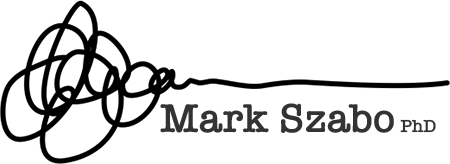This is a topic of interest that will support my research into solving environmental conflicts. This article provides an understanding of the manner in which stakeholder positions are established through the attempt to communicate such positions, and how the differences, and similarities, arise in comprehending the same piece of information?
Recursive communication theory, as articulated by Krippendorff (1994), creates a model with nested loops of communication that allow for an ongoing adjustment to external stimuli from other sources of communication, treating that adjustment as part of the process rather than an aberration. Recursive communication is also the process by which stakeholders in a dispute establish their own positions with respect to other participants and themselves, and it is the mechanism by which I will test prospect theory.
Krippendorff (1994) puts forth three propositions that outline his theory of recursive communication.
Proposition One: Human communication theory must also be about itself.
Krippendorff (1994) asserts that theories about communications are communications in and of themselves. This is an important concept for understanding how stakeholder communications contribute to creating their own positions. At its very nature, communication is a series of nested loops that reinforce and contribute to each other. Nothing is said in isolation, and the very act of communicating a position reinforces it within the communicator. As we examine the role of recursive communication, therefore, we must be cognizant of our own contribution to the analysis.
Proposition Two: Everything said is communicated to someone understanding it as such.
Communication cannot take place without the participation of someone else, and when we communicate we either implicitly or explicitly understand that to be true. Therefore, “…understanding is constituted in a reflexive loop, in the unfolding of one's reality construction into one's practices and their re-entry into the very constructions from which they were derived (Krippendorff, 1994, p. 83).” The author takes pains to point out that this is not the same as understanding in the sense of phenomenology, which views understanding as entirely subjective. Krippendorff (1994) sees understanding as something set by the knower himself.
When it comes to stakeholder positions, this means that as one is aware of the impact of positioning communications on one’s counterparts in a conflict, that very awareness reinforces one’s own position, and it is that awareness that drives the recursive loop (Lewicki, et al., 2003; Dewulf, et al., 2005). In this context frames are created and re-created by their recursive nature. It is a process, not just of making, but of telling. And per Krippendorff (1994), the telling is also the making.
Proposition Three: Human communication constitutes itself in the recursive unfolding of communication constructions, held by participants (including of each other), into intertwining practices that these participants can recognize and explain in terms of being in communication.
This proposition adds to the previous one by accounting for the fact that each communicating party understands that the other is being impacted by their own communication, and this creates an ongoing feedback loop for as long as the parties remain aware. What results is a kind of homeostasis between the communicants, which can be recalibrated upon further, newer communication.
From the perspective of environmental conflict stakeholders, proposition three turns individual frames into the social system that constitutes the dispute at hand, and awareness of that system can drive a higher order of communication. “Understanding human communication as a social phenomenon requires adequate recursive depth at least equal to the understanding of those communicated with (Krippendorff, 1994, p. 88).”
Through recursive communication, conflict stakeholders create their own meaning, in part, through the act of communicating it to their counterparts, and a meta-analysis of the resulting communications system that is the dispute itself leads to a higher understanding of the nature of that dispute. Therein lies the hope for resolution.
References
Dewulf, A., Gray, B., Putnam, L., Aarts, N., Lewicki, R., Bouwen, R., & Van Woerkum, C. (2005). Disentangling approaches to framing: mapping the terrain. IACM 18th Annual ….
Krippendorff, K. (1994). A Recursive Theory of Communication. In D. Crowley & D. Mitchell (Eds.), Communication Theory Today (pp. 78–104). Cambridge, UK: Polity Press.
Lewicki, R. J., & Gray, B. (2003). Introduction: Making Sense of Intractable Environmental Conflicts. In R. J. Lewicki, B. Gray, & M. Elliott (Eds.), Making Sense of Intractable Environmental Conflicts (First., pp. 1–10). Washington, D.C.: Island Press.

